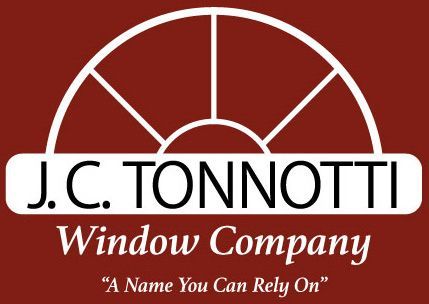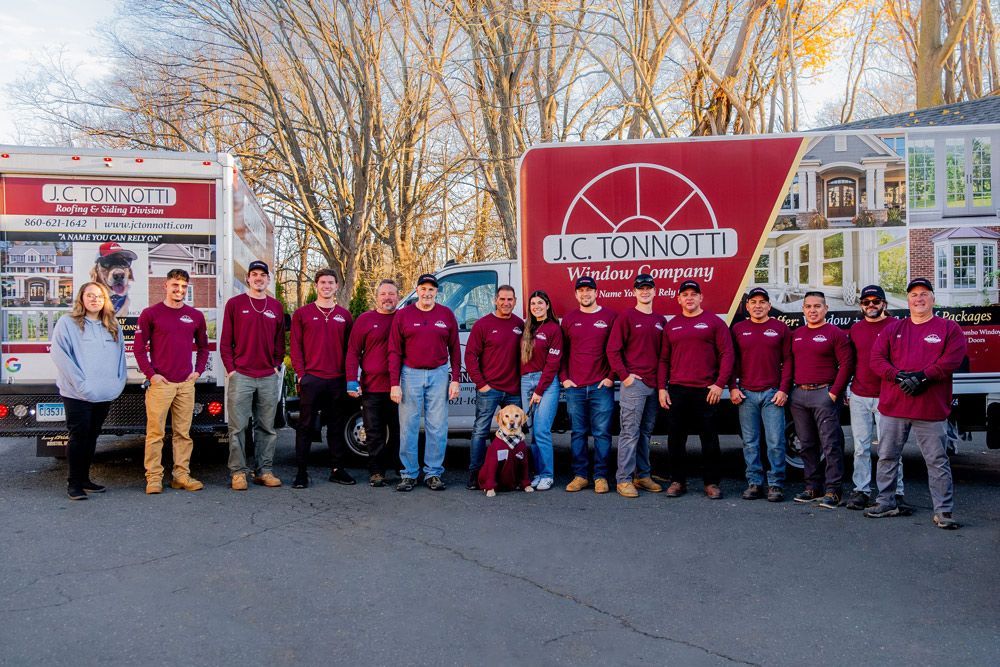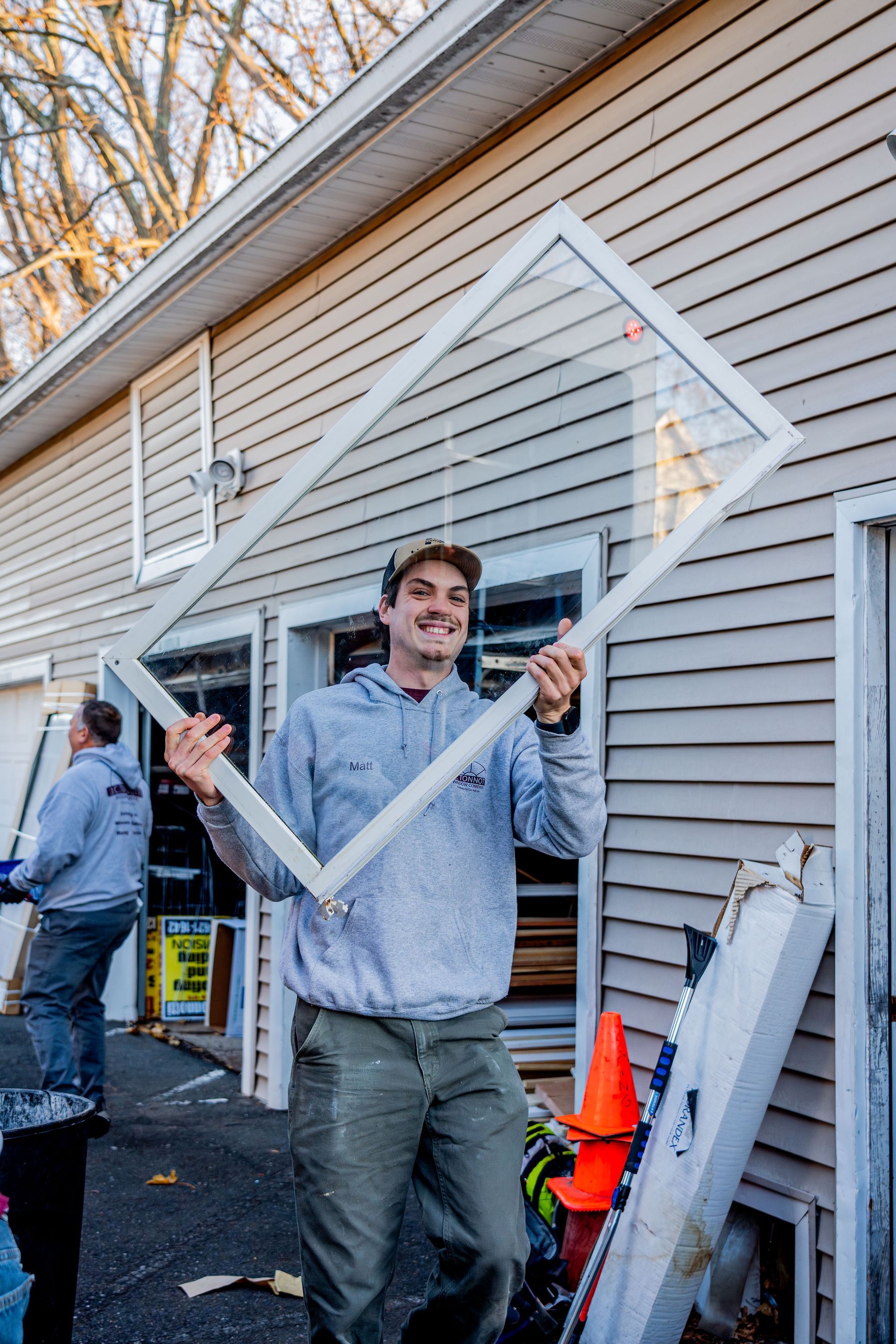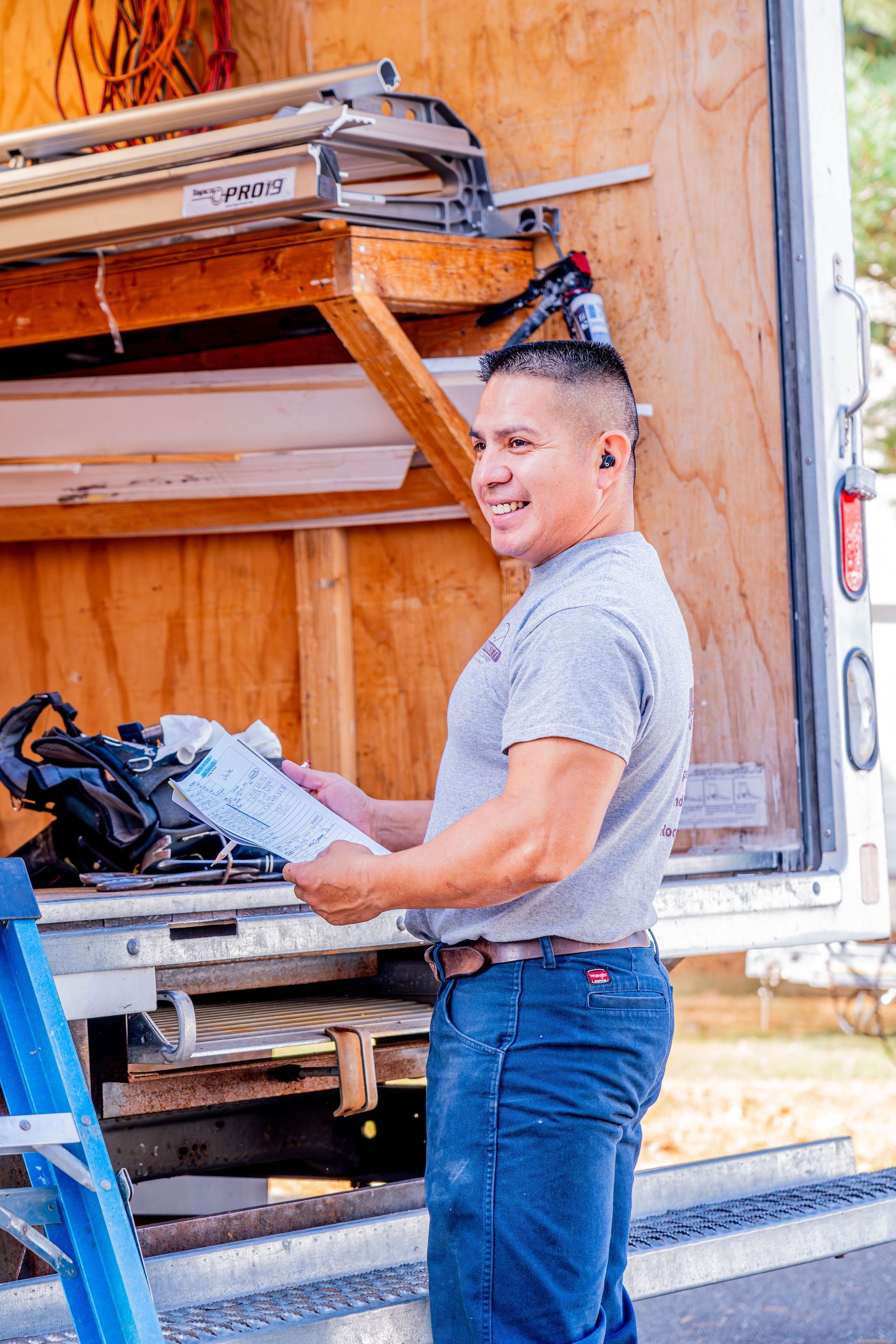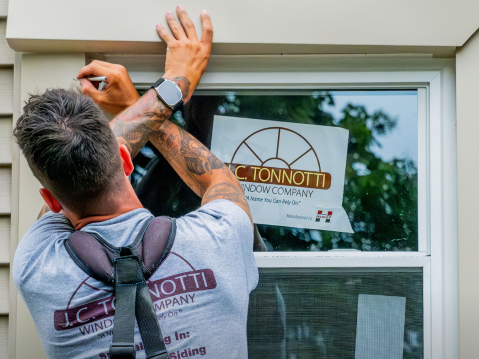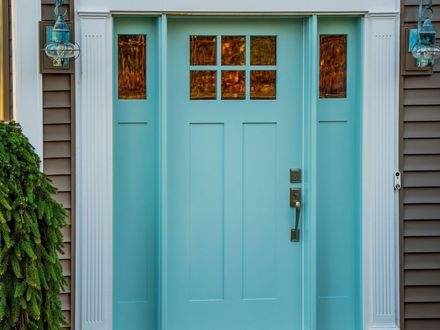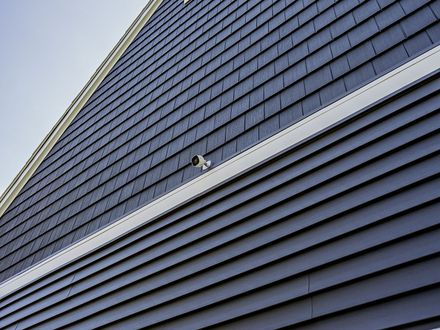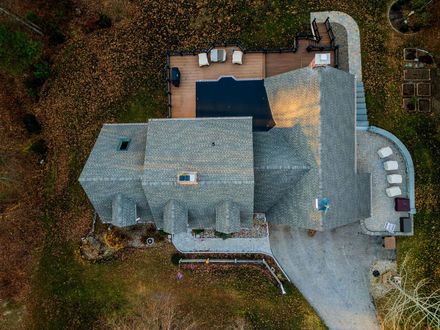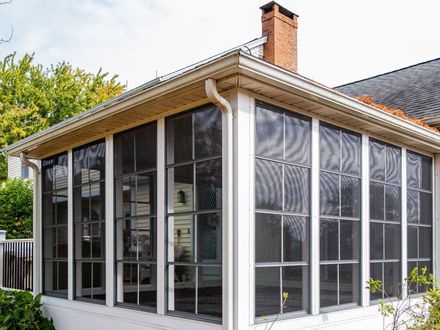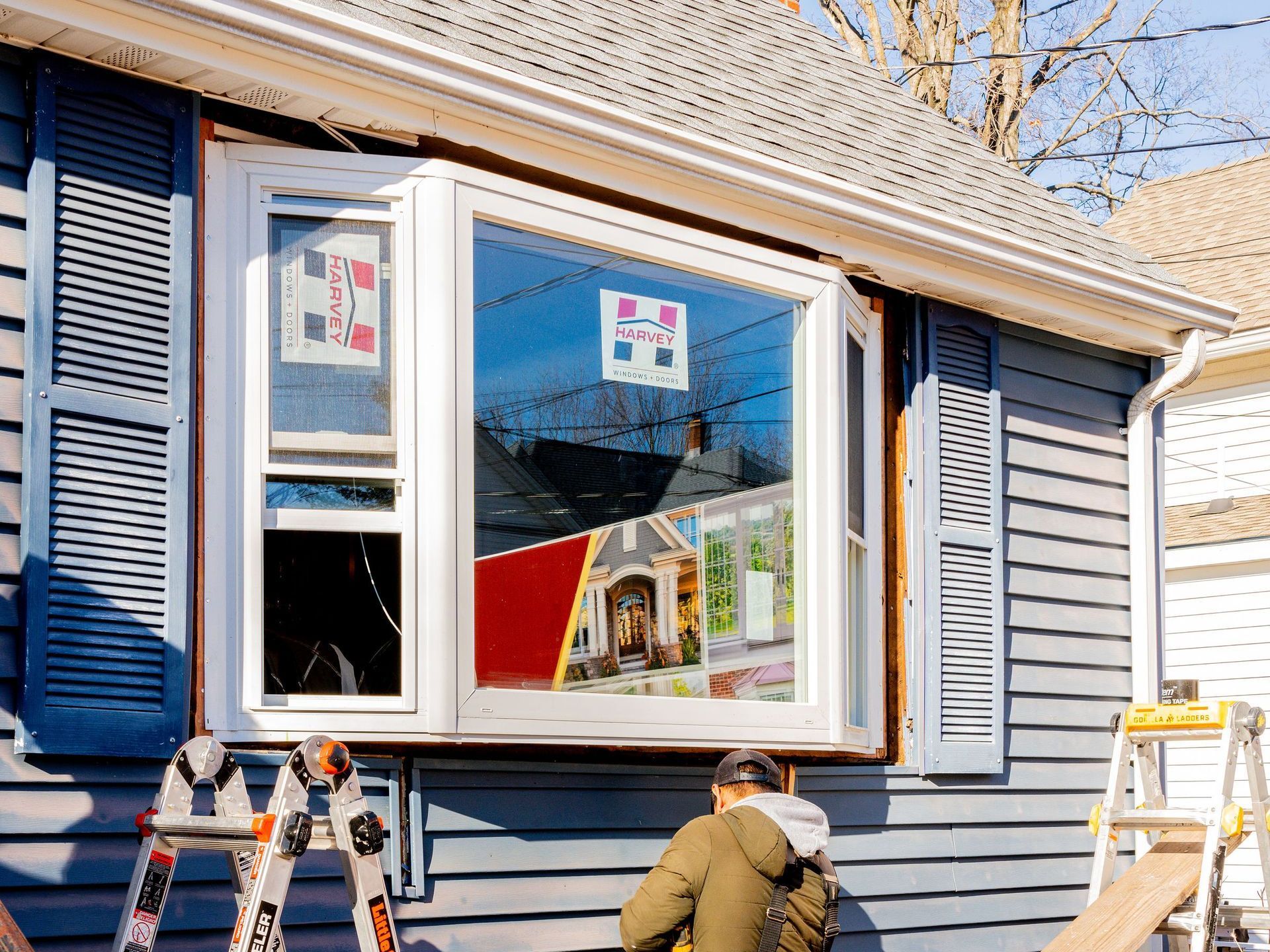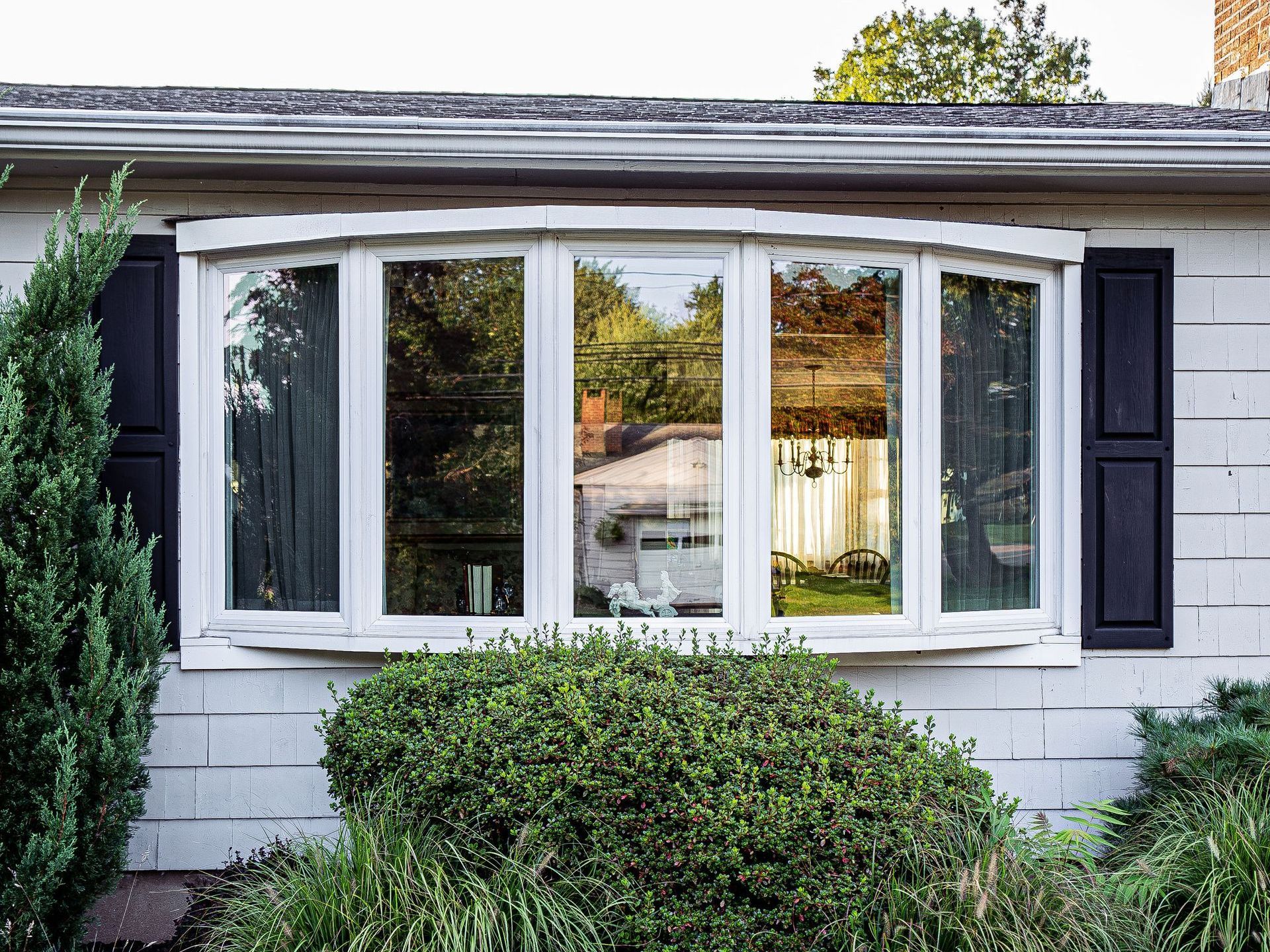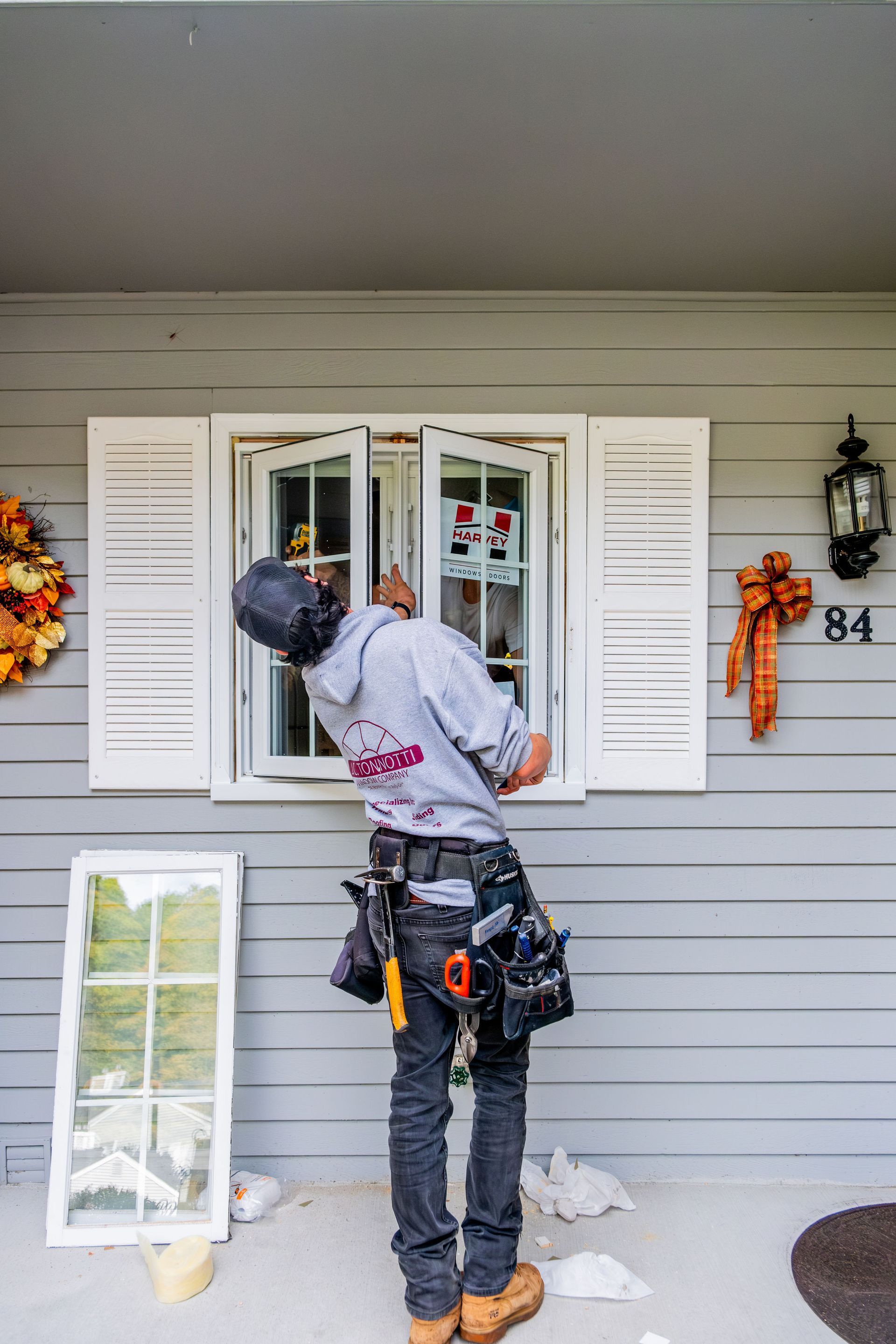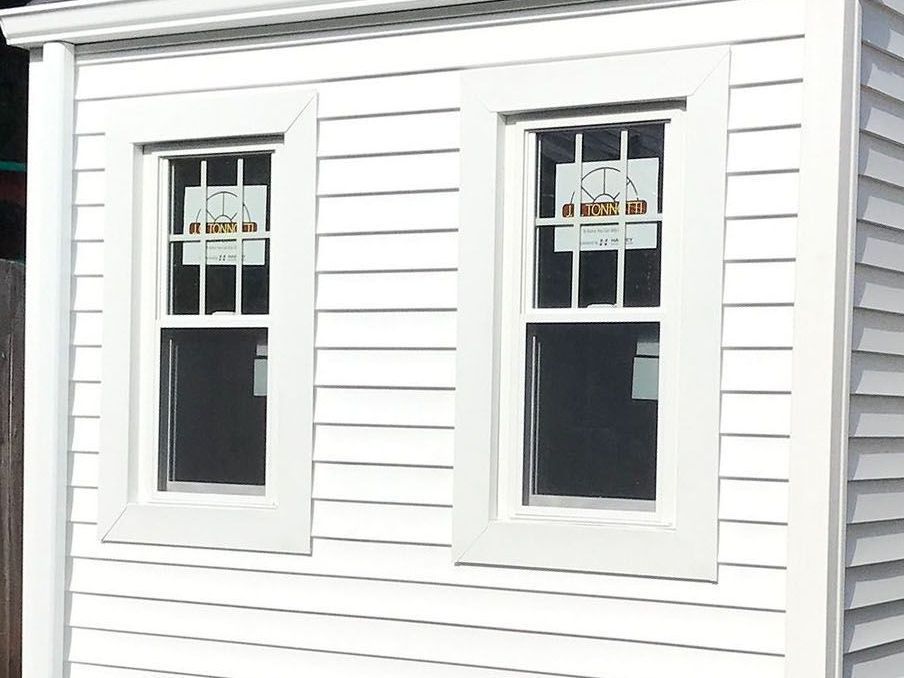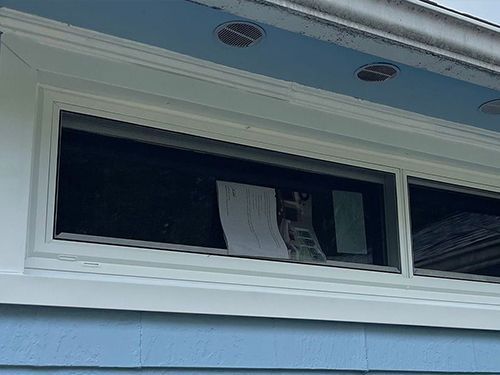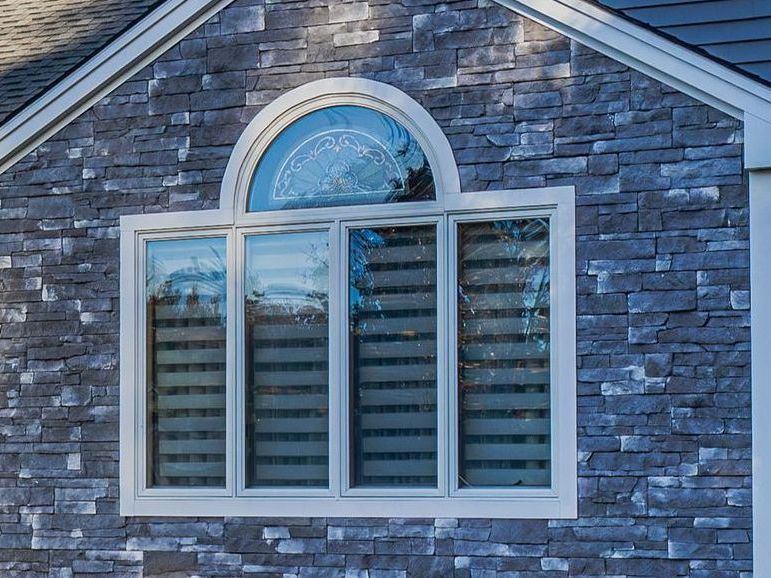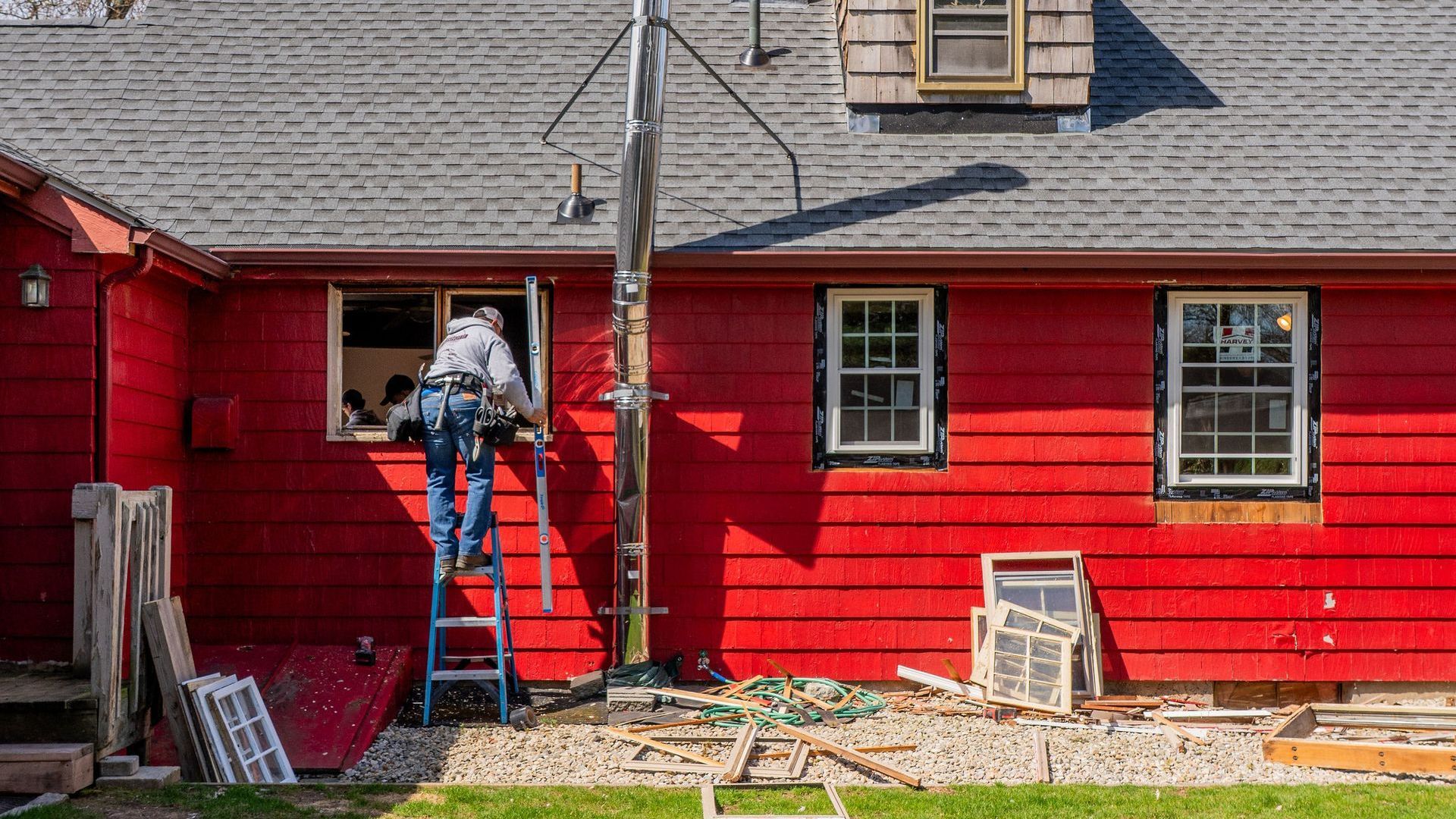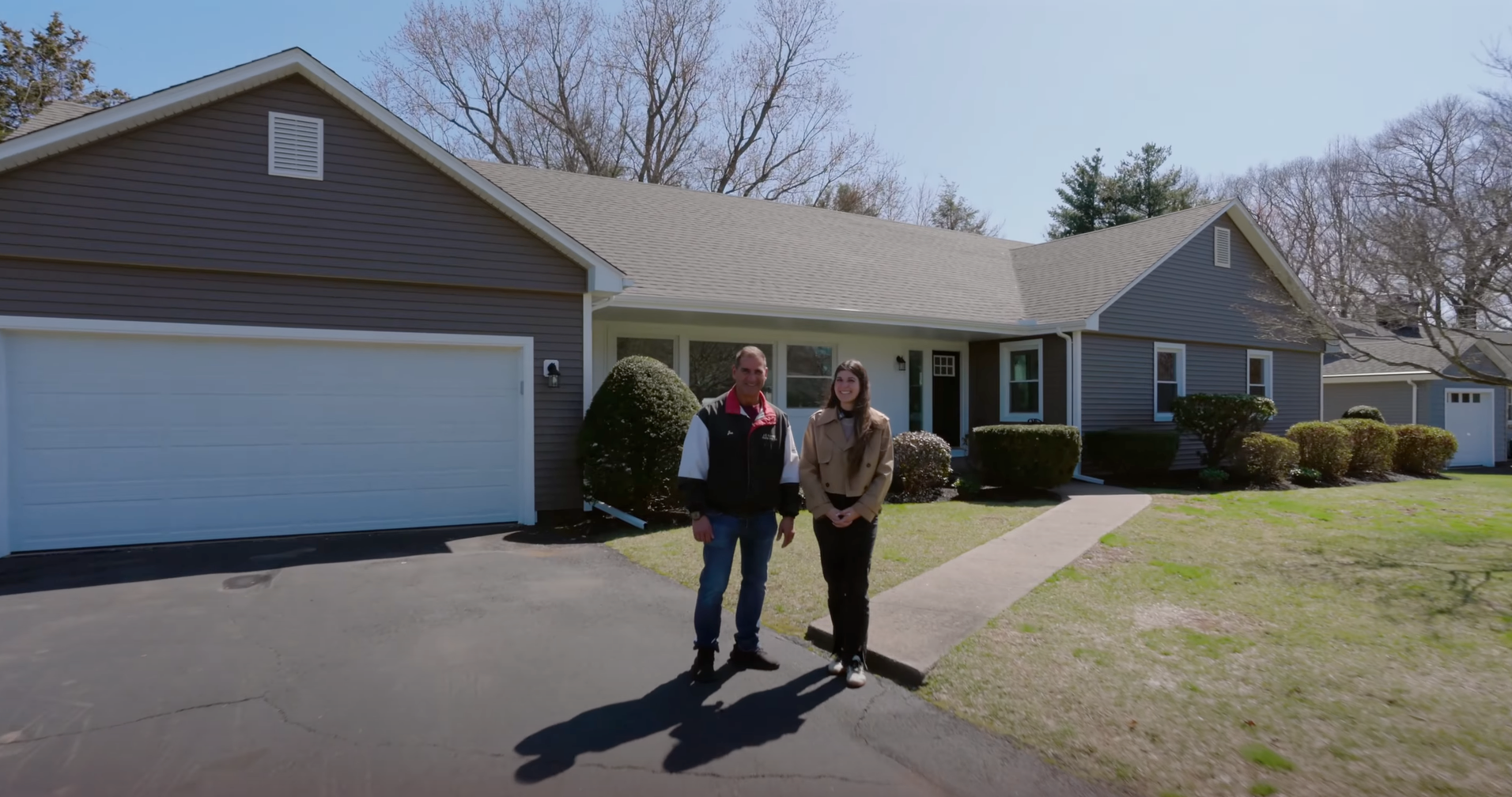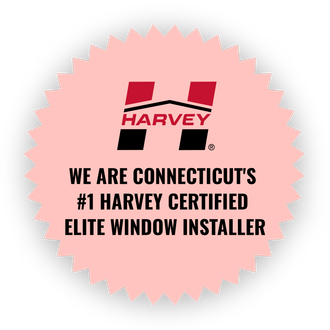
CENTRAL CT'S TRUSTED WINDOW, DOOR, ROOFING, & SIDING CONTRACTORS
Local. Trusted. Family owned SINCE 1979
J. C. Tonnotti Window Company is a family owned and operated company, established in 1979, offering a variety of home improvement services for over 40 years, ranging from installation of custom ordered
windows,
doors,
siding and
roofing. We have helped homeowners across the state of Connecticut transform their homes with a level of quality craftsmanship and excellent customer service that gives you peace of mind.
We pride ourselves on putting our best efforts into every project, whether it’s installing energy-efficient replacement windows, preserving and protecting your home with a new roof, refacing your home with new siding, or refreshing an entryway with a new door system.

TESTIMONIALS
We Recently Sat Down With J.C. Tonnotti Clients to Ask Them How Their Experience Was, Here's What They Had to Say:
Why CT Homeowners ARE CHOOSING JC TONNOTTI
True In-House Crews – No Subcontractors
Unlike many competitors who outsource labor, J.C. Tonnotti employs full-time, in-house crews for every project. This ensures consistent quality, expert craftsmanship, and accountability from start to finish—giving homeowners peace of mind knowing exactly who is working on their home.
Complete One-Stop Exterior Remodeling
From windows and doors to roofing, siding, and sunrooms, J.C. Tonnotti measures, designs, installs, services, and warranties every project under one roof. Customers don’t have to juggle multiple contractors—we handle everything with professional trucks, expert installers, and dedicated office staff to ensure a seamless experience.
40+ Years of Local, Family-Owned Excellence
Founded in 1979, J.C. Tonnotti has been a trusted name in exterior remodeling for over 40 years. Unlike newer companies that come and go, we’ve built a strong reputation in Connecticut, operating from the same Southington location for decades. Homeowners choose us because they know we’ll be here to stand behind our work for years to come.
Fast, Professional Installations with Strong Warranties
Our team specializes in efficient, high-quality installations—often completing projects like window and roof replacements in just one day. We also back our work with manufacturer warranties and our own service guarantees, so customers can trust their investment is protected for the long haul.
OR GIVE US A CALL
Comprehensive Solutions for Every Home Improvement Need
Comprehensive Home Improvement Services – From Stunning Windows to Durable Roofing, Designed to Elevate Your Home’s Comfort, Style, and Value
Window REPLACEMENTS
Upgrade your home with energy-efficient, high-quality windows from J.C. Tonnotti. We offer expert installation of double-hung, casement, bay, bow, and custom windows to enhance curb appeal, improve insulation, and increase home value.
Doors
From entry doors to patio and storm doors, we provide top-tier door installations that combine security, style, and durability. Choose from a variety of materials, We provided the best fiberglass insulated doors, for a perfect fit for your home.
Siding
Protect and beautify your home with our premium siding solutions. Whether you prefer vinyl, fiber cement, or insulated siding, our expert team ensures a seamless installation that enhances energy efficiency and curb appeal.
Roofing
A strong roof is essential for protecting your home. We specialize in roof replacements and installations, using high-quality materials from GAF, CertainTeed, and Tamko to ensure durability, longevity, and superior weather resistance.
DON'T SEE WHAT YOU NEED? WE ALSO PROVIDE SERVICES ADDITIONAL TO WHAT YOU SEE HERE
Trusted by Homeowners Across Connecticut
Discover Why Homeowners Across Connecticut Choose Us for Quality, Reliability, and Exceptional Results

See the Difference Quality Makes – Browse Our Recent Projects
Explore Our Portfolio of Transformative Projects and See How We Bring Quality and Craftsmanship to Every Home
-
Making Monday marvelous with a major home upgrade! ❤️ Starting the week by installing 8 double-hung windows, 4 double-mullion windows, and a beautiful new entry door. 🚪 Ready to upgrade your home’s comfort and style? Let’s start your next project today! 🛠️✨ #windowreplacement #windowinstallation #roofingcompany #sidinginstallation #jctonnotti #connecticutrealestate #homeimprovement #homerenovation #windowsanddoorsButton
-
New construction, new views! ✨ We're installing top-quality Harvey windows (4-3 lite rolling, 1-2 lite rolling) and a stylish Harvey entry door, plus an Anderson storm door for extra protection. 🚪 Ready to upgrade your home’s comfort and style? Let’s start your next project today! 🛠️✨ #windowsanddoors #exteriordesign #connecticuthomes #entrydoors #connecticutrealestate #connecticuthomeservices #familyowned #ctbuilders #localcontractor #connecticutlifeButton
-
We're installing beautiful, reliable doors, even if the weather's a bit crazy! You can count on JC Tonnotti to get the job done right, whatever the day brings. 🌦️ See the difference quality craftsmanship can make. Reach out for a free quote now! 🏠🔧 #windowsanddoors #exteriordesign #energyefficient #curbappeal #energysaving #craftsmanship #ctbuilders #jctonnotti #ctcontractorButton
-
Where quality meets convenience. Our mobile setup ensures efficient and seamless service for your home improvements. 🚐 Fully equipped and ready to bring our expertise directly to your project. 😎 Ready to upgrade your home’s comfort and style? Let’s start your next project today! 🛠️✨ #localcontractor #exteriorrenovations #connecticuthomes #homeimprovement #windowsanddoors #roofingcontractor #windowcompany #smallbusinessct #familyownedButton
-
Welcoming the month with another solid project! 💪 We're excited to get started and deliver outstanding results for every homeowners this May! Have a great weekend! 🎉 Join countless satisfied property owners—schedule your consultation with us today! 🏠😊 #ctcontractor #roofingcompany #exteriordesign #jctonnotti #commercialconstruction #localcontractor #southingtonct #connecticutpride #supportlocalct #smallbusinessctButton
-
Cheers to a fantastic April! This beautiful home reminds us that there's always something to celebrate. Let's make May even better! Transform your home with windows that shine—contact us to schedule a consultation! 🌟🏡 #windowreplacement #windowsanddoors #exteriordesign #connecticuthomes #energyefficient #homeupgrade #energysaving #jctonnotti #connecticutpride #supportlocalct #smallbusinessctButton
-
Provia perfection! 🤩 2 double French doors in snow mist, just in time for Friday. Happy weekend, everyone! 🎉 Join countless satisfied homeowners—schedule your home improvement consultation with us! 🏠😊 #doorinstallation #homeimprovement #windowsanddoors #exteriordesign #connecticuthomes #energyefficient #jctonnotti #southingtonct #connecticutpride #supportlocalctButton
-
What an elegant look! 👀 This home's transformation is all about roofing, siding, and windows working together beautifully in this modern, clean style. It's the combination of quality and care that defines JC Tonnotti's work. ❤️ Join countless satisfied homeowners—schedule your home improvement consultation with us! 🏠😊 #windowinstallation #roofingcompany #sidinginstallation #homeimprovement #homerenovation #dreamhome #jctonnotti #connecticutpride #supportlocalct #connecticuthomeservicesButton
-
Talk about teamwork! We're not just installing windows, we're building relationships. And these guys are the heart of our team! ❤️ 💪 Transform your home with windows that shine—contact us to schedule a consultation! 🌟🏡 #windowreplacement #windowinstallation #windowsanddoors #exteriordesign #homeupgrade #contractorlife #jctonnotti #connecticutpride #connecticutlifeButton
-
A Monday friendly reminder that good windows and doors can totally transform your home. This windows and that entry door are a perfect example of how quality craftsmanship can make all the difference. We're all about making homes beautiful and functional, just like JC Tonnotti has been doing for years. ❤️ See the difference quality craftsmanship can make. Reach out for a free quote now! 🏠🔧 #windowsanddoors #exteriordesign #connecticuthomes #entrydoors #craftsmanship #cthomeimprovement #jctonnotti #connecticutrealestate #connecticuthomeservices #localcontractorButton
-
Window and door in action! 👷♂️ Installing 8 double-hung windows, 4 double mullion windows, and a new entry door just in time for the weekend. Happy Friday everyone! 🎉 Transform your home with windows that shine—contact us to schedule a consultation! 🌟🏡 #windowreplacement #windowinstallation #windowsanddoors #connecticuthomes #homeupgrade #jctonnotti #localcontractor #ctcontractor #cthomeimprovement #familyownedButton
-
Hello, Spring elegance! 🌸 We're creating a bright and airy feel for this home, just in time for the blooming season. Ready to upgrade your home’s comfort and style? Let’s start your next project today! 🛠️✨ #roofingcompany #sidinginstallation #homeimprovement #homerenovation #constructionlife #exteriordesign #connecticuthomes #curbappeal #jctonnottiButton
-
When you see the JC Tonnotti truck, you know good things are happening! Quality windows and doors are on their way, along with a team that treats your home like their own. It's like family helping family. ❤️ Your dream home is just a call away. Discover how we can help today! 📞🏡 #windowcompany #roofingcompany #sidinginstallation #craftsmanship #communitybuilders #jctonnotti #southingtonct #connecticutpride #smallbusinessct #familyowned #localcontractorButton
-
Even Mondays can be a little brighter with the right windows! Just installed 15 new Harvey double hung windows, including 3 double mullions, for this beautiful home. 🏘️ Transform your home with windows that shine—contact us to schedule a consultation! 🌟🏡 #windowreplacement #windowinstallation #roofingcompany #sidinginstallation #energyefficient #curbappeal #homeupdates #cthomeimprovement #connecticutrealestate #connecticuthomeservicesButton
-
TGIF! 🎉 Relax, unwind, and maybe dream up some home improvements? 😉 These windows are perfect for letting in all that natural light and creating a cozy atmosphere. Transform your home with windows that shine—contact us to schedule a consultation! 🌟🏡 #windowcompany #windowreplacement #windowinstallation #energyefficient #curbappeal #dreamhome #familyowned #jctonnotti #smallbusinessct #connecticutpride #supportlocalctButton
-
New month, new season, new vibes, and hey, maybe it’s time for a little home glow-up too! 🌸 Harvey entry door with sleek vinyl siding. We’re all about making your home feel like the best place to be. Your dream home is just a call away. Discover how we can help today! 📞🏡 #windowsanddoors #siding #windowcompany #windowreplacement #craftsmanship #homeupdates #connecticutpride #supportlocalct #smallbusinessct #jctonnottiButton
-
Check out what a difference these new windows can make! ✨ It makes a huge difference, right? It's all about bringing that sunshine in! ☀️ We're making homes beautiful and efficient. Transform your home with windows that shine—contact us to schedule a consultation! 🌟🏡 #windowinstallation #exteriordesign #connecticuthomes #energyefficient #curbappeal #energysaving #jctonnotti #supportlocalct #smallbusinessct #ctcontractorButton
-
Happy Friday! 🎉 Right tools and a steady hand, our team takes pride in each cut. At JC Tonnotti, we treat every project with the same care and quality we’d give our own family. 🏡❤️ Your dream home is just a call away. Discover how we can help today! 📞🏡 #craftsmanship #buildingupgrade #localcontractor #communitybuilders #connecticutpride #ctcontractor #ctbuilders #localcontractorButton
-
Looking back at this Southington roof job, and wow, what a difference a few months make! From snowy slopes to spring sunshine, we got it done. Proof that JC Tonnotti tackles any season! Ready to upgrade your home’s comfort and style? Let’s start your next project today! 🛠️✨ #roofing #homeimprovement #homeupgrade #contractorlife #jctonnotti #southingtonct #connecticutpride #supportlocalct #smallbusinessct #connecticutlife #ctcontractorButton
-
This place got a whole new look! Roof, windows, doors, siding—all done by JC Tonnotti. Imagine the view with your morning coffee! 🏠 Transform your home with windows that shine—contact us to schedule a consultation! 🌟🏡 #windowreplacement #windowinstallation #homeupgrade #energysaving #jctonnotti #ctcontractor #cthomeimprovement #familyowned #connecticutpride #connecticutrealestateButton
-
Ending the month feeling grateful for our wonderful customers. It’s always a pleasure to help make your house feel more like home. Thank you for trusting us to be part of your journey. Join countless satisfied homeowners—schedule your home improvement consultation with us! 🏠😊 #happycustomers #homeimprovement #craftsmanship #familyowned #localcontractor #dreamhome #qualityservice #connecticutpride #supportlocalct #smallbusinessct #connecticutlifeButton
-
Just another day of bringing our best to make your home shine! 💪 We’re all about getting things done the right way, with the care your home truly deserves. 🏡 Transform your home with windows that shine—contact us to schedule a consultation! 🌟🏡 #replacementwindows #siding #windowsanddoors #energyefficientwindows #newenglandhomes #sustainableliving #homestyling #ctcommunity #builderpride #connecticuthomesButton
-
Another day, another siding project—this time in the office! We’re busy making sure everything’s on point and can’t wait to bring that same care to your next project. ✨ Ready to upgrade your home’s comfort and style? Let’s start your next project today! 🛠️✨ #sidinginstallation #exteriordesign #jctonnotti #southingtonct #connecticutpride #supportlocalct #smallbusinessct #connecticutlife #ctcontractor #familyowned #ctbuilders #localcontractorButton
-
New week, new windows to brighten up some homes! 🌞 We're kicking things off strong, making sure every detail is just right, like we always do. Here’s to another great week ahead! 🏡 Your dream home is just a call away. Discover how we can help today! 📞 #windowsanddoors #exteriordesign #jctonnotti #southingtonct #connecticutpride #supportlocalct #smallbusinessct #connecticutlife #ctcontractor #familyowned #ctbuilders #localcontractorButton
-
And that’s a wrap on another week as we welcome Spring! We’ve just finished up a full home makeover, focusing on quality and making sure our customers are smiling. Here's to a fresh start and a feeling of accomplishment! ✨ Your dream home is just a call away. Discover how we can help today! 📞🏡 #roofingcompany #roofing #constructionlife #shingles #homeimprovement #roofreplacement #familyowned #communitybuilders #ctbuilders #connecticutlife #jctonnotti #southingtonct #connecticutprideButton
-
A little TBT action from last month when the crew upgraded the windows and doors at the office! The team is now finished with the the siding phase of our office remodel! We are soooo excited this is happening! Please stop by and check it out! See the difference quality craftsmanship can make. Reach out for a free quote now! 🏠🔧 #windowreplacement #windowsanddoors #jctonnotti #southingtonct #connecticutpride #supportlocalct #smallbusinessct #connecticutlife #ctcontractor #cthomeimprovement #familyowned #ctbuilders #localcontractorButton
-
A 12-square GAF HDZ roof! From new builds to replacements, we bring the same quality and care to every job—because your home deserves the best. 💪🏡 Ready to enhance your home’s comfort and style? Let’s start your project today! 🏠🔧 #roofingcompanyButton
-
Let the light in! Our team installed this beautiful bay window to enhance the home’s charm and efficiency. We ensure every detail is done right, giving you peace of mind and long-term value. Transform your home with windows that shine—contact us to schedule a consultation! 🌟🏡 #windowreplacement #windowinstallation #homeimprovement #homerenovation #connecticuthomes #energyefficient #energysaving #jctonnotti #connecticuthomeservices #familyowned #ctbuilders #localcontractorButton
-
Bringing comfort, security, and style to every home. 🔧 Project Overview • Type of Installation: Windows, Entry Doors, Storm Door • Primary Product/Material: Harvey Windows, Entry Doors, Storm Door 🛠 Key Features • Durability: Harvey Windows and entry doors offer long-lasting performance, weather resistance, and security. • Energy Efficiency: ENERGY STAR-rated windows improve insulation, reducing energy costs. • Aesthetic Enhancement: The new entry doors and bay window elevate curb appeal, while the storm door adds protection and complements the home's style. Ready to upgrade your home’s comfort and style? Let’s start your next project today! 🛠️✨ #windowreplacement #roofingcompany #sidinginstallation #homeimprovement #windowsanddoors #stormdoor #entrydoors #familyowned #localcontractor #curbappeal #connecticuthomes #doublehungwindowsButton
-
And here it is! the finished roof for our Delahunty full home makeover, looking good as new! 😊 At JC Tonnotti, we treat your home like it’s our own, making sure it’s safe, cozy, and beautiful for you and your family. Big thanks to all of our previous homeowners for letting us be a part of your home journey! 🏡 Ready to upgrade your home’s comfort and style? Let’s start your next project today! 🛠️✨ #roofing #roofingcompany #homeimprovement #constructionlife #connecticuthomes #craftsmanship #communitybuilders #homeupdates #buildercommunity #jctonnotti #cthomeimprovementButton
-
Big changes going on for JC Tonnotti! 💪 We're in the process of revamping our Headquarters on Bristol Street with new doors, windows and siding! Time for our office to match the top quality look we deliver for all of our clients! Stay tuned! See the difference quality craftsmanship can make. Reach out for a free quote now! 🏠🔧 #windowreplacement #windowinstallation #jctonnotti #southingtonct #connecticutpride #supportlocalct #smallbusinessct #connecticutlife #ctcontractor #cthomeimprovement #familyowned #ctbuilders #localcontractorButton
-
Behind every project is a team working from a place we’re proud to call home—our office. Transform your home with windows that shine—contact us to schedule a consultation! 🌟🏡 #windowreplacement #communitybuilders #jctonnotti #connecticutpride #supportlocalct #smallbusinessct #connecticutlife #ctcontractor #cthomeimprovement #ctbuilders #connecticuthomeservices #familyowned #localcontractorButton
-
A perfect fit, a perfect view! We make sure your windows reflect the heart of your home—bright, beautiful, and energy-efficient—because your home deserves the best! Ready to upgrade your home’s comfort and style? Let’s start your next project today! 🛠️✨ #windowreplacement #windowinstallation #exteriordesign #energyefficient #craftsmanship #jctonnotti #southingtonct #supportlocalct #smallbusinessct #familyowned #ctbuilders #localcontractorButton
-
Proudly serving our neighbors with craftsmanship and care. 🏠🔨 Whether it’s a small repair or a full replacement, we treat every home like our own. Your dream home is just a call away. Discover how we can help today! 📞🏡 #roofing #roofingcompany #homeimprovement #constructionlife #connecticuthomes #craftsmanship #communitybuilders #homeupdates #buildercommunity #jctonnotti #cthomeimprovementButton
-
🚛 Rolling up, ready to get to work! Every great transformation starts here—tools loaded, crew on-site, and another home about to get the upgrade it deserves. See the difference quality craftsmanship can make. Reach out for a free quote now! 🏠🔧 #jobsiteviews #homeupgrades #craftsmanshipmatters #windowinstallation #sidingexperts #connecticutcontractors #bluecollarproud #renovationdoneright #buildingbetterhomes #trustedcraftsmanshipButton
-
From curb appeal to energy savings, JC Tonnotti is here to improve your home with top-quality siding and windows. We’re proud to offer expert craftsmanship that your family will enjoy for years to come. Join countless satisfied homeowners—schedule your home improvement consultation with us! 🏠😊 #windowreplacement #connecticuthomes #energyefficient #homerenovation #interiordesign #newenglandhomes #windowcompany #curbappeal #southingtonct #homedecorButton
-
Precision, teamwork, and care in every detail! 🏡✨ Inside and out, our team works together to ensure flawless window installations that enhance your home's comfort and style. At JC Tonnotti, we treat your home like it’s our own, delivering quality you can trust. Ready to upgrade your home’s comfort and style? Let’s start your next project today! 🛠️✨ #windowreplacement #windowinstallation #connecticuthomes #energyefficient #replacementwindows #homerenovation #localcontractor #familybusiness #craftsmanship #homeupgradeButton
-
📏 Every cut, every measurement, every detail, it all comes together to create a home that’s more efficient, beautiful, and built to last. Our team is on-site, making sure every piece fits just right. Because quality work isn’t just about the final look, it’s about doing it right from start to finish. Transform your home with windows that shine—contact us to schedule a consultation! 🌟🏡 #homerenovation #localcontractor #exteriordesign #connecticuthomes #familybusiness #sustainableliving #homeimprovement #outdoorrenovation #builderpride #renovationideasButton
-
🔨 Wrapping up the week with another home upgrade! There’s no better way to close out the week than with 14 brand-new double-hung windows installed and ready to perform. More natural light, better insulation, and a clean, refreshed look—because every detail matters. Here’s to another week of quality craftsmanship and satisfied homeowners! Your dream home is just a call away. Discover how we can help today! 📞🏡 #windowcompany #homeupgrade #renovationideas #dreamhome #contractorlife #homedecor #constructionindustry #cthomeimprovement #connecticutlifeButton
-
Every step matters when it comes to your home. 🏡✨ From removing the old to fitting in the new, our team works with care and precision to deliver energy-efficient windows that transform your space. Transform your home with windows that shine—contact us to schedule a consultation! 🌟🏡 #windowreplacement #windowinstallation #connecticuthomes #homerenovation #energyefficient #replacementwindows #localcontractor #familybusiness #craftsmanship #homeimprovementButton
-
🪟 23 new windows, endless possibilities! A home upgrade that’s more than just looks—these newly installed double-hung windows bring in more natural light, improve insulation, and add long-term value. Ready to upgrade your home’s comfort and style? Let’s start your next project today! 🛠️✨ #replacementwindows #energyefficientwindows #newenglandhomes #sustainableliving #homestyling #ctcommunity #solarshades #builderpride #homeremodelButton
-
🚪 Mondays open new doors—literally! A new week means new projects, and we’re starting strong with this seamless patio door installation. Precision, craftsmanship, and a clean finish make all the difference in creating a home that’s more efficient, stylish, and built to last. Here’s to a week of progress, one install at a time! Transform your home with windows that shine—contact us to schedule a consultation! 🌟🏡 #windowinstallation #homedecor #energyefficient #sustainablehome #renovationideas #communitybuilders #exteriordesign #ctcontractor #frontyarddesign #windowcontractorButton
-
✨ Craftsmanship you can count on! This home now boasts fresh siding, efficient gutters, 3 new windows, a patio door, and a double entry door—all designed to blend style with functionality. Transform your home with windows that shine—contact us to schedule a consultation! 🌟🏡 #windowreplacement #connecticuthomes #energyefficient #homerenovation #sidinginstallation #supportlocalct #familybusiness #constructionlife #ctcontractorButton
-
Great team, great energy and one adorable pup! 🐾📸 Behind every successful project at JC Tonnotti is a team that feels like family. Because we are! 🏡❤️ See the difference quality craftsmanship can make. Reach out for a free quote now! 🏠🔧 #teamworkmakesdreamwork #connecticuthomes #windowreplacement #energyefficient #homerenovation #familybusiness #communitybuilders #happyteam #connecticutprideButton
-
✨ Bright, beautiful, and built for comfort! This home now features 14 double-hung windows, 2 rolling windows, 2 casements, and a sleek entry door, all wrapped in durable white aluminum. Every upgrade enhances natural light, energy efficiency, and a polished exterior finish, making this house feel like home. Transform your home with windows that shine—contact us to schedule a consultation! 🌟🏡 #windowinstallation #entrydoorupgrade #homerenovation #connecticutliving #craftsmanshipmatters #durablehomes #energyperformance #homeimprovements #curbappeal #localcontractorsButton
-
✨ A fresh look, built to last. This home shines with 30 square of Royal siding in Storm, 8 Harvey double-hung windows, 2 combination windows, 2 entry doors, and 1 storm door—all designed for durability, energy efficiency, and curb appeal. Join countless satisfied homeowners—schedule your home improvement consultation with us! 🏠😊 #sidingtransformation #homeupgrade #energyperformance #durablehomes #connecticutliving #exteriorremodeling #harveywindows #stormdoors #craftsmanshipmattersButton
-
🔨 The foundation of every great project? A skilled team and the right tools. At JC Tonnotti, we combine expertise, precision, and dedication to deliver results that stand the test of time. Whether it’s new windows, siding, or a patio door, our crew brings craftsmanship and attention to every detail—because your home deserves the best. Let’s work together to make your home the talk of the neighborhood! Your dream home is just a call away. Discover how we can help today! 📞🏡 #teamworkmatters #precisionwork #windowupgrades #homeimprovementexperts #localctbusiness #craftsmanshipcounts #connecticutcontractors #homeexteriorupdatesButton
-
🏡 Seamless style and superior functionality come together! This project features the installation of 23 double-hung windows, a 1–2 lite rolling window, and a sleek patio door. To ensure a clean and polished exterior, all frames were wrapped in durable white aluminum coil, delivering both elegance and long-lasting protection. 🌟 Let's make your home the standout on the block! Transform your home with windows that shine—contact us to schedule a consultation! 🌟🏡 #windowinstallation #homeimprovement #patiodoors #energyperformance #noisecontrol #craftsmanshipmatters #localcontractors #homerenovation #connecticutliving #exteriordesignButton
-
Proud to showcase a transformation built to last! 🏡✨ With 8 Harvey double-hung windows, a beautiful bay window, and upgraded patio, storm, and entry doors, this home received the craftsmanship and care it deserves. At JC Tonnotti, every detail is about making your house feel like home. Ready to upgrade your home’s comfort and style? Let’s start your next project today! 🛠️✨ #windowreplacement #entrydoors #patiodoor #baywindow #connecticuthomes #replacementwindows #craftsmanship #homeimprovement #energyefficient #localcontractorButton
-
Finishing the month strong with top-notch craftsmanship! 🏡✨ Every detail is carefully considered to ensure your home’s upgrades not only look great but also stand the test of time. From cutting materials to perfect installation, our team is committed to providing quality and reliability in every step of the process. Ready to give your home the upgrade it deserves? Contact us and let's make your vision a reality! #roofingcontractor #localcontractor #windowreplacement #connecticuthomes #windowcompany #windowinstallation #homerenovation #craftsmanship #windowsanddoorsButton
-
Midweek Motivation: Transform your home with lasting beauty! 🏡✨ Freshly updated with sleek siding and perfectly framed windows, this home is ready to shine all year long. The modern finish enhances curb appeal while providing the durability needed to stand strong through every season. Ready to transform your home? Reach out to see what we can do for you! 🌟 #windowcompany #cthomeimprovement #southingtonct #roofingcompany #localcontractor #energyefficientwindows #smallbusinessct #windowsanddoors #roofingcontractor #buildercommunityButton
-
Bringing lasting beauty to your home! 🏡✨ With 39 square of Mastic Ovation Montana Suede siding, this home now blends timeless style with durable protection, expertly installed to stand strong through the seasons. Join countless satisfied homeowners—schedule your home improvement consultation with us! 🏠😊 #sidinginstallation #supportlocalct #familybusiness #constructionlife #homerenovation #connecticutlife #entrydoors #windowsanddoors #energysaving #craftsmanshipButton
-
Bringing comfort and style to your home! 🏡✨ New windows enhance both the look and efficiency of your space, with expert installation that ensures long-lasting comfort and beauty, no matter the season. Transform your home with windows that shine—contact us to schedule a consultation! 🌟🏡 #windowcompany #connecticuthomes #energyefficient #homerenovation #interiordesign #newenglandhomes #windowcompany #curbappeal #southingtonct #homedecorButton
-
Let the light in with new, energy-efficient Harvey replacement windows! 🏡✨ This upgrade brightens the space, improves energy efficiency, and adds beauty and lasting comfort with expert craftsmanship, ensuring your home stays cozy through every season. Contact us today and experience the difference our dedication can make! 🛠️😊 #localcontractor #exteriordesign #connecticuthomes #homeimprovement #windowsanddoors #roofingcontractor #windowcompany #smallbusinessctButton
-
Monday hustle in full swing! 💪🏡 Starting the week strong with expert window installations. Every detail matters, and our team is always focused on delivering top-quality work with precision and care. Whether it's getting the job done or providing lasting comfort, we’re here to make sure your home is in great hands. Let’s make this week count—contact JC Tonnotti to start your next home improvement project! #homerenovation #localcontractor #connecticuthomes #familybusiness #connecticutlife #ctbuilders #cthomeimprovement #craftsmanship #connecticutpride #smallbusinessctButton
-
🛠 Ending the week on a strong note with teamwork and preparation. Reflecting on a productive week and laying out plans for even greater success in the days ahead. Here’s to quality work and dedication, every step of the way. Ready to upgrade your home? Let’s talk about how we can help bring your vision to life. #homerenovation #localcontractor #exteriordesign #connecticuthomes #familybusiness #sustainableliving #homeimprovement #outdoorrenovation #builderpride #renovationideasButton
-
Mid-month home transformation! 🏡✨ With GAF HDZ Weatheredwood shingles, custom copper chimney flashing, and a beautiful Therma Tru Arctic Ice entry door with sidelights, this home now has the durability and style it deserves. Let’s make your home as strong and beautiful as it can be. 💪✨ Contact us to get started! #windowcompany #cthomeimprovement #roofingcompany #localcontractor #familybusiness #smallbusinessct #windowsanddoors #roofingcontractor #buildercommunityButton
-
Transformations in motion! 🏡✨ Watch as this home gets a stunning Weatheredwood roof with custom copper chimney flashing, seamless gutters for a sleek finish, and a beautiful entry door with sidelights. From start to finish, every detail is crafted with care and built to last. Transform your home with expert craftsmanship—contact us to schedule your consultation today! 🌟🏡 #roofreplacement #sidinginstallation #seamlessgutters #entrydoors #stormdoor #connecticuthomes #homeimprovement #localcontractor #craftsmanship #homerenovationButton
-
Bringing comfort and style to every corner of your home! 🏡✨ These expertly installed Harvey Tribute windows brighten the space while boosting energy efficiency. At JC Tonnotti, we focus on quality craftsmanship that feels like home. Ready to upgrade your home’s comfort and style? Let’s start your next project today! 🛠️✨ #windowreplacement #windowinstallation #harveywindows #connecticuthomes #replacementwindows #craftsmanship #localcontractor #familybusiness #energyefficient #homerenovationButton
-
Simplicity and elegance at its finest! 🏡✨ This home exudes timeless charm with its clean architectural lines and well-defined roofline. The attention to detail in every corner enhances the beauty and durability, ensuring a lasting impression for years to come. Crafted with precision, designed to impress 🏡👏 📞 Ready to elevate your home’s curb appeal? Contact us today to start your transformation! #homeimprovement #curbappeal #roofingcompany #sidinginstallation #windowsanddoors #homeupgrade #localcontractor #connecticuthomes #homeexterior #homeinspiration #qualitycraftsmanshipButton
-
Care and precision in every detail! 🏡✨ From cleaning windows to making sure every touch is perfect, it’s all about delivering quality and craftsmanship you can trust. Ready to upgrade your home’s comfort and style? Let’s start your next project today! 🛠️✨ #windowreplacement #windowcleaning #craftsmanship #connecticuthomes #localcontractor #homeimprovement #familybusiness #energyefficient #homerenovation #cleanwindowsButton
-
This home received a major boost with the installation of 23 double-hung windows, 1 hopper, and 1-2 lite rolling window, all from Harvey Tribute Windows, finished off with a clean white coil wrap. 🏠 The combination of energy-efficient windows and sleek design brings lasting comfort and a fresh look, just in time to weather the colder months. 🌬️ As winter sets in, this home is now equipped to stay cozy and energy-efficient all season long. Thinking about upgrading your home? Let’s turn your vision into reality today! 💡🔨 #windowinstallation #harveywindows #homeimprovement #energyefficientwindows #windowreplacement #localcontractor #connecticuthomes #smallbusinessctButton
-
A complete transformation from top to bottom! 🏡✨ This home now shines with a sleek 16-square HDZ charcoal roof, crisp AlSide glacier white siding, and energy-efficient new windows—including rolling windows, hoppers, a combination, and a double-hung masterpiece. At JC Tonnotti, we deliver quality craftsmanship that turns houses into dream homes. See the difference quality craftsmanship can make. Reach out for a free quote now! 🏠🔧 #windowreplacement #roofingcompany #energyefficient #connecticuthomes #homeimprovement #curbappeal #sidinginstallation #replacementwindows #homerenovation #localcontractorButton
-
A fresh start with top-tier upgrades! 🏡✨ 🔧 Full Project Overview: 16 sq. HDZ Charcoal roofing installed for long-lasting protection. 18 sq. AlSide Glacier White siding added for enhanced elegance. 9-2 lite rolling windows, 2 hoppers, 1 combo, and 1 double-hung. 🛠 Key Features: Superior weather resistance from the HDZ Charcoal roof, timeless beauty and durability from the Glacier White siding, and energy-efficient custom windows for seamless integration. At JC Tonnotti, we combine beauty with function, ensuring your home gets the attention it deserves. Ready to upgrade your home’s comfort and style? Let’s start your next project today! 🛠️✨ #roofingcompany #sidinginstallation #windowinstallation #homeimprovement #connecticuthomes #roofingcontractor #homeupgrade #localcontractor #roofreplacementButton
-
Fresh upgrades, lasting impressions! ✨🏡 This beautifully enhanced home now boasts a sleek, durable roof and pristine siding to match. At JC Tonnotti, we believe every detail matters when creating a safe, stylish, and energy-efficient home for you and your family. Transform your home with windows, siding, and roofing that shine—contact us to schedule a consultation! 🌟🏡 #windowreplacement #roofingcompany #homeimprovement #energyefficient #connecticuthomes #localcontractor #replacementwindows #curbappeal #homerenovation #familybusinessButton
-
Bright views and durable upgrades! ✨🏡 This project showcases energy-efficient Harvey windows and a polished white aluminum exterior wrap, blending style and functionality for a refreshed look. At JC Tonnotti, we make every detail count! Your dream home is just a call away. Discover how we can help today! 📞🏡 #windowreplacement #connecticuthomes #energyefficient #homerenovation #replacementwindows #curbappeal #localcontractor #windowinstallation #exteriordesign #craftsmanshipButton
-
🎉 Happy New Year from all of us at JC Tonnotti! 🎉 New Year, New Siding, New Beginnings! 🏡✨ Kickstart 2025 with an upgrade that lasts! This home just received a beautiful facelift with Royal Silver Mist siding and brand-new gutters, combining style, durability, and protection. At JC Tonnotti, we’re proud to bring families the highest quality craftsmanship that ensures comfort and peace of mind for years to come. Let’s make 2025 a year of lasting change and fresh starts—starting with your home! Contact us today to begin your next upgrade. 🎊 #sidinginstallation #connecticuthomes #sidingcontractor #familybusiness #roofingcompany #windowcompany #homeimprovement #outdoorrenovation #craftsmanship #supportlocalctButton
-
As the year comes to a close, we’re reflecting on one of our favorite projects this year—a stunning transformation that truly showcases the difference quality craftsmanship can make. From premium Harvey sliding doors to durable roofing, every detail was carefully designed and installed to exceed expectations. We’re grateful for the opportunity to bring this vision to life and look forward to more amazing projects in the year ahead. Ready to upgrade your home? Contact us today for a free quote and let’s create something special together! 🏠 #windowcontractor #windowcompany #roofingcompany #familybusiness #roofingcontractor #smallbusinessct #craftsmanship #ctcontractor #connecticutprideButton
-
Every great project starts with the right materials. At JC Tonnotti, we use only the quality products to ensure your home is beautiful, durable, and built to last. From windows to siding, you can trust us to deliver excellence every step of the way. 🌟 📞 Contact us today to get started on your next home improvement project! #windowcompany #connecticutpride #supportlocalct #familybusiness #homerenovation #windowsanddoors #homerenovation #homeimprovement #ctcontractorButton
-
While families gather and homes fill with festive cheer, we’re proud to be the team that helps make your house feel like home. Even during the holidays, our dedication to quality craftsmanship never takes a break. 🛠️✨ From our family to yours, wishing you a season filled with warmth, joy, and all the comforts of home. Thank you for trusting us with your home improvement needs! #homerenovation #localcontractor #connecticuthomes #familybusiness #connecticutlife #ctbuilders #cthomeimprovement #craftsmanship #connecticutpride #smallbusinessctButton
-
As the holidays bring changing weather, this home’s durable roof, Harvey double-hung windows, a beautiful bay window, a patio door, and a storm door ensure comfort and protection all year long. Whether it’s snow, rain, or sunshine, JC Tonnotti’s craftsmanship guarantees your home is ready for anything. 🏡✨ ❄️ Let JC Tonnotti help you create a home that’s not only festive but ready for every season. Because there’s no place like home for the holidays. Upgrade your home’s comfort and efficiency—schedule your consultation today! #roofingcompany #homestyling #ctcommunity #localcontractor #exteriordesign #connecticuthomes #outdoorrenovation #energyefficientwindows #windowsanddoorsButton
-
Every window is expertly installed to fit your home perfectly—because details matter. Our team takes pride in delivering solutions you can count on, every time. Looking to upgrade your windows? Join countless satisfied homeowners who trust JC Tonnotti for their home improvement needs. Contact us today to schedule your consultation and let’s get to work on your next project! 🛠️🔧 #connecticuthomes #homeimprovement #windowsanddoors #windowcompany #smallbusinessct #ctcontractor #ctbuildersButton
-
A little behind-the-scenes work goes a long way. Staying organized and focused helps us deliver the best for your home, every time. 🏡✨ Bringing care and quality to every project is more than our promise—it’s the JC Tonnotti way. ❤️ Contact us today and experience the difference our dedication can make! 🛠️😊 #ctcontractor #roofingcompany #buildercommunity #connecticutpride #sidinginstallation #windowinstallation #homerenovation #homeimprovement #connecticutlifeButton
-
Doing it right isn't just a motto; it's how we approach every project. From quality installations to maintaining a clean and professional workspace, we’re committed to delivering excellence in everything we do. 💪 See the difference quality craftsmanship can make. Reach out for a free quote now! 🏠 #ctcontractor #familybusiness #cthomeimprovement #ctbuilders #windowsanddoors #windowcompany #homeupgrade #contractorlife #roofingcompanyButton
-
Every effort counts when we come together as a team, proving that helping hands create a stronger, more connected workplace. 🌟 Looking to enhance your home? 🏠 Contact us today and see what we can do for you! ✨ #localcontractor #exteriordesign #connecticuthomes #homeimprovement #windowsanddoors #roofingcontractor #windowcompany #smallbusinessctButton
-
At JC Tonnotti, we take pride in protecting and enhancing homes with top-quality roofing and siding solutions. Whether you're upgrading for durability, energy efficiency, or curb appeal, our expert team is here to help. 📞 Call us today to discuss your next project. Let’s build something great together! #ctcontractor #ctbuilders #windowcompany #roofingcompany #sidingcontractor #localcontractor #familybusiness #communitybuilders #supportlocalctButton
-
From the elegant siding to the inviting entryway, this home’s transformation is a testament to our dedication to quality and style. Every detail has been designed to create a space that feels as good as it looks. 🏡✨ 💼 Bringing expertise and passion to every project, JC Tonnotti helps families create homes they love. Looking to transform your home? Let’s get started today! #cthomeimprovement #dreamhome #entrydoors #windowsanddoors #sidingcontractor #ctcontractor #cthomeimprovementButton
-
🐾 Say Hello to Our Most Loyal and Adorable Family Member, Mack! Mack is the shining star of the JC Tonnotti family! From his wagging tail to his stylish bandana, he spreads smiles and pawsitive vibes everywhere he goes. Meeting Mack truly feels like the warmest hug on four legs. 🐶❤️✨ 🏠🔧 See the difference quality craftsmanship can make—whether it’s your home or a furry friend who’s always awake. Reach out for a free quote now and let us create! ✨ #windowreplacement #connecticuthomes #interiordesign #windowsanddoors #homeupgrade #localcontractor #supportlocalct #windowcompanyButton
-
Here’s what quality looks like from above! This beautifully crafted roof showcases our commitment to durability, precision, and design. Every shingle is installed with care to protect your home and family for years to come. 🛠️✨ Serving Connecticut and beyond with trusted craftsmanship for over 40 years. Ready to upgrade your home? Let’s get started today! #connecticuthomes #homeupgrade #homerenovation #localcontractor #exteriordesign #connecticuthomes #familybusiness #roofingcompanyButton
-
We believe every detail matters—just like in this project where precision meets craftsmanship. From start to finish, our trusted team ensures your home gets the care it deserves. 🛠️ At JC Tonnotti, we treat every project with the same care and quality we’d give our own family. 🏡❤️ #roofingcontractor #localcontractor #windowreplacement #connecticuthomes #windowcompany #windowinstallation #homerenovation #craftsmanship #windowsanddoorsButton
-
Hope everyone enjoyed a wonderful Thanksgiving! 🍁 As we head into the holiday season, we’re grateful for the chance to help our clients create homes that feel warm, welcoming, and ready for every family gathering. Looking to refresh your home before winter? Let’s make it happen! 🏠✨ #windowcompany #cthomeimprovement #southingtonct #roofingcompany #localcontractor #energyefficientwindows #smallbusinessct #windowsanddoors #roofingcontractor #buildercommunityButton
-
Grateful for the opportunity to help create beautiful, lasting spaces for families to gather and enjoy. 🏡🍂 Wishing everyone a cozy Thanksgiving tomorrow filled with warmth and good company! Ready to enhance your home for every season? Let’s bring your vision to life! 🛠️✨ #windowcompany #cthomeimprovement #southingtonct #roofingcompany #localcontractor #energyefficientwindows #smallbusinessct #windowsanddoors #roofingcontractor #buildercommunityButton
-
Fresh siding and sturdy gutters bring a polished look and reliable protection to this home. 🏡🍁 Our team is dedicated to making sure your home stands out and stays secure, season after season. Looking to refresh your home’s exterior? Let’s get started on your upgrade! 🛠️✨ #windowcompany #cthomeimprovement #southingtonct #roofingcompany #localcontractor #energyefficientwindows #smallbusinessct #windowsanddoors #roofingcontractor #buildercommunityButton
-
Home transformation magic! ✨ This project brought new life with 8 Harvey double-hung windows, a beautiful bay window, a patio door, a storm door, and 3 fresh entry doors. Every detail crafted to bring warmth, style, and energy efficiency to this home. Ready to make your home more comfortable and stylish? Contact us to get started! 🏡✨ #windowcompany #cthomeimprovement #southingtonct #roofingcompany #localcontractor #energyefficientwindows #smallbusinessct #windowsanddoors #roofingcontractor #buildercommunityButton
-
Turning homeowners dreams into a reality! 🪟🏡 🔧 Full Project Overview: 23 double-hung windows, 1 hopper, and 1 Lite rolling window installed using Harvey Tribute Windows. Exterior wrapped in white coil for a sleek, polished finish. 🛠 Key Features: Durable, ENERGY STAR-rated for better efficiency, and designed to boost curb appeal with a clean, seamless look. Precision matters. Every window we install is built to last and crafted with care—because your home deserves nothing less. 🏠✨ Ready to upgrade your home? Let’s talk about how we can help bring your vision to life. #windowinstallation #harveywindows #homeimprovement #energyefficientwindows #doublehungwindows #windowreplacement #southingtonct #connecticutcontractors #cthomeimprovement #ctwindowsButton
-
Proud to serve our community with quality windows, siding, roofing, and more! 🏡 Our team is here to help you create a home that feels just right, inside and out. Looking to enhance your home? Contact us today and see what we can do for you! 🌟✨ #windowcompany #cthomeimprovement #southingtonct #roofingcompany #localcontractor #energyefficientwindows #smallbusinessct #windowsanddoors #roofingcontractor #buildercommunityButton
-
Transforming outdoor spaces into cozy escapes with our EZ Screen Porch installation and a sleek Harvey patio door. 🌿✨ Enjoy the fresh air and scenic views while staying comfy and protected. Ready to enhance your outdoor living? Contact us today! 🏡🌟 #windowcompany #cthomeimprovement #southingtonct #roofingcompany #localcontractor #energyefficientwindows #smallbusinessct #windowsanddoors #roofingcontractor #buildercommunityButton
-
Our team is all about precision and care, whether we’re high up on the roof or adding the final touches below. It’s all part of making your home a place you can trust and love. 🏡✨ Transform your home with trusted craftsmanship—let’s get started today! 🛠️😊 #windowcompany #cthomeimprovement #southingtonct #roofingcompany #localcontractor #energyefficientwindows #smallbusinessct #windowsanddoors #roofingcontractor #buildercommunityButton
-
From our family to yours, we bring care and quality to every window installation. Our team is dedicated to making your home as comfortable and beautiful as possible. 🏡✨ Looking to upgrade your windows? Contact us today and see the difference our craftsmanship can make! 🛠️😊 #windowcompany #cthomeimprovement #southingtonct #roofingcompany #localcontractor #energyefficientwindows #smallbusinessct #windowsanddoors #roofingcontractor #buildercommunityButton
-
Another week of getting homes prepared for the winter! 🍂🏡 New windows can drastically improve your home's energy efficiency in all seasons, but especially the winter. ❄️ Looking to upgrade? Contact us for a consultation and see how we can enhance your home! #windowcompany #cthomeimprovement #southingtonct #roofingcompany #localcontractor #energyefficientwindows #smallbusinessct #windowsanddoors #roofingcontractor #buildercommunityButton
-
From windows to siding and roof packages, we’re proud to be your local choice for quality home improvements. 🏡 Our team brings expertise and care to every project, ensuring that your home feels welcoming, stylish, and secure for years to come. Ready to transform your home? Reach out to see what we can do for you! 🌟🏠 #windowcompany #cthomeimprovement #southingtonct #roofingcompany #localcontractor #energyefficientwindows #smallbusinessct #windowsanddoors #roofingcontractor #buildercommunityButton
-
Windows that are more than 20 years old may be costing you extra on energy bills, as they lack the insulation of modern, energy-efficient designs. At J.C. Tonnotti, we install windows built to keep your home warm in winter and cool in summer—saving you money all year long. 💸❄️☀️ Upgrade your home’s comfort and efficiency—schedule your consultation today! #windowcompany #cthomeimprovement #southingtonct #energyefficientwindows #smallbusinessct #windowsanddoors #localcontractor #cthomes #ctliving #buildercommunityButton
-
Bringing new life to this porch! 🏡 Our team is hard at work, making sure every detail is handled with care. Whether it’s your home’s first makeover or a much-needed update, we’re here to create spaces where family memories are made. See the difference quality craftsmanship can make. Reach out for a free quote now! 🏠🔧 #windowcompany #cthomeimprovement #southingtonct #roofingcompany #localcontractor #energyefficientwindows #smallbusinessct #windowsanddoors #roofingcontractor #buildercommunityButton
-
Making homes feel warm and welcoming—inside and out. 🍂✨ With new patio doors and updated windows, we’re all about helping you enjoy the view from the comfort of your own home. Ready to upgrade your home’s comfort and style? Let’s start your next project today! 🛠️✨ #windowcompany #cthomeimprovement #southingtonct #roofingcompany #localcontractor #energyefficientwindows #smallbusinessct #windowsanddoors #roofingcontractor #buildercommunityButton
-
No tricks here, just treating homes to fresh new looks! 🎃🏡 Whether it's new windows or doors, we’ve got you covered with quality craftsmanship you can count on. Transform your home with windows that shine—contact us to schedule a consultation! 🌟🏡 #windowcompany #cthomeimprovement #southingtonct #roofingcompany #localcontractor #energyefficientwindows #smallbusinessct #windowsanddoors #roofingcontractor #buildercommunityButton
-
Getting this porch updated with all new everything! Perfect install of the EZ Screen Porch system and a new Harvey patio door. 🪟🚪👌🏼 At JC Tonnotti, we treat every project like it’s for our own family, ensuring quality and care in every detail. Ready to upgrade your home’s comfort and style? Let’s start your next project today! 🛠️✨ #windowcompany #cthomeimprovement #southingtonct #roofingcompany #localcontractor #energyefficientwindows #smallbusinessct #windowsanddoors #roofingcontractor #buildercommunityButton
-
Taking care of your home like it’s our own. 🏡❤️ From the first shingle to the last, we put family values and quality into every step of the process—so you can feel safe and proud under your roof. Ready to upgrade your home’s comfort and style? Let’s start your next project today! 🛠️✨ #windowcompany #cthomeimprovement #southingtonct #roofingcompany #localcontractor #energyefficientwindows #smallbusinessct #windowsanddoors #roofingcontractor #buildercommunityButton
-
It’s more than just doors and windows—it’s about bringing comfort, quality, and trust to every home we work on. From start to finish, we’re here to help make your house feel more like home. 🏡 See the difference quality craftsmanship can make. Reach out for a free quote now! 🏠🔧 #windowcompany #cthomeimprovement #southingtonct #roofingcompany #localcontractor #energyefficientwindows #smallbusinessct #windowsanddoors #roofingcontractor #buildercommunityButton
-
Nothing like a strong roof to keep your home warm and cozy this fall. 🍂🏡 We installed GAF shingles to ensure this home is snug and protected for the season ahead! Ready to upgrade your home’s comfort and style? Let’s start your next project today! 🛠️✨ #windowcompany #cthomeimprovement #southingtonct #roofingcompany #localcontractor #energyefficientwindows #smallbusinessct #windowsanddoors #roofingcontractor #buildercommunityButton
-
Nothing says fall like a home that’s prepped and ready for the cooler months ahead. 🍂🍁 From installing new windows to keeping your home cozy, we’re here to help you enjoy the season in comfort! Transform your home with windows that shine—contact us to schedule a consultation! 🌟🏡 #windowcompany #cthomeimprovement #southingtonct #roofingcompany #localcontractor #energyefficientwindows #smallbusinessct #windowsanddoors #roofingcontractor #buildercommunityButton

COmmon types of windows
Discover Expert Advice, Industry Trends, and Practical Tips to Help You Make Informed Decisions About Your Home Improvement Projects
WINDOW AND DOOR INSIGHTS for Homeowners
Discover Expert Advice, Industry Trends, and Practical Tips to Help You Make Informed Decisions About Your Home Improvement Projects
LOCATED IN SOUTHINGTON,
Serving Central CT for Over 40 Years
For over 40 years, J.C. Tonnotti has proudly served homeowners across Southington and the rest of central Connecticut.
At J.C. Tonnotti, we proudly serve homeowners throughout Central Connecticut, providing expert exterior remodeling solutions, including windows, doors, roofing, siding, and exterior wood rot repair. Based in Southington, CT, we primarily service areas within a 45-minute radius, ensuring prompt, reliable service to communities such as Hartford, New Haven, Waterbury, and surrounding towns. With over 40 years of experience, we are a trusted name in the industry, delivering high-quality craftsmanship and superior customer service to homeowners across the region.
Wondering if we service your location? You can always give us a call to make sure.
